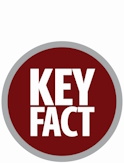
Ash, soil and surface waters impacted by fire can affect land and marine eocsytems, harming human and environmental health for years.
November 16, 2023 | Erin Bluvas, bluvase@sc.edu
The National Science Foundation has awarded $200,000 to environmental health sciences professor Mohammed Baalousha to study the nanomaterials in the ash, soil and surface waters resulting from/impacted by the August fire in Maui, Hawaii. His team will also look at the risks of metals and nanomaterials that could be absorbed by the lungs.
“There is an urgent need to better understand the nature and concentration of contaminants in wildland-urban fires like the one that took place in Maui,” Baalousha says. “It is equally important to identify the potential risks to citizens who have been exposed to the ash, soil and surface waters impacted by these fires.”

Ash, soil and surface waters impacted by fire can affect land and marine eocsytems, harming human and environmental health for years.
Believed to be the deadliest U.S. fire in the past century, the Maui wildfires lasted four days and ruined 2,170 acres of urban and wild areas. Thirty thousand residents and tourists fled the affected zone, yet the fires claimed more than 100 lives, and nearly 400 people are missing.
In addition to the 2,200 structures destroyed and the estimated $5.5 billion worth of damage, scientists and government/community leaders are working to assess the health and environmental impacts of this event. Areas of concern include ocean run off that harms coral reefs and marine ecosystems as well as the effects of widespread damage to and transformation of the landscape. For example, the burning of soil can lead to massive erosion that chokes coral and results in dust that can blow and harm human health for years.
Baalousha’s team already has experience in assessing the impacts of the wildland-urban fires that took place at the LNU Lightning and North Complexes in California in 2020. Their research revealed the transformation of metals and metal oxides following the fires, which changed these nanomaterials to become more hazardous to environmental and human health by making them absorbable by the lungs.
“Given the historic nature of the burned areas in Maui, we expect to discover new forms of metals and nanomaterials,” Baalousha says. “Our findings from the 2020 California fires also lead us to believe that we will find high concentrations of environmentally persistent free radicals in the Maui area. These environmentally persistent free radicals are known contaminants that may lead to environmental and human health effects.”
The research team, which is based out of USC’s Environmental Nanoscience and Analytics Laboratory and the South Carolina SmartState Center for Environmental Nanoscience and Risk, will partner closely with the Maui community throughout the project. Their main goal is to help residents understand the presence and risk of contaminants that remain on the grounds of their homes and businesses.
They will organize stakeholder meetings of local land managers, public health officials, media, and other interested parties to share findings as they become available. On a broader scale, they will use their lessons learned to help educate and inform communities in other areas vulnerable to fire.

The Environmental Nanoscience & Analytics Laboratory interdisciplinary research team focusing on understanding the environmental exposure, interactions, fate, effects, and applications of engineered nanomaterials.

The South Carolina SmartState Center for Environmental Nanoscience and Risk (CENR) investigates the effects and behaviors of manufactured and natural nanoparticles on environmental and human health. CENR also develops low-hazard and low-risk nanotechnologies for the benefit of human and environmental health.